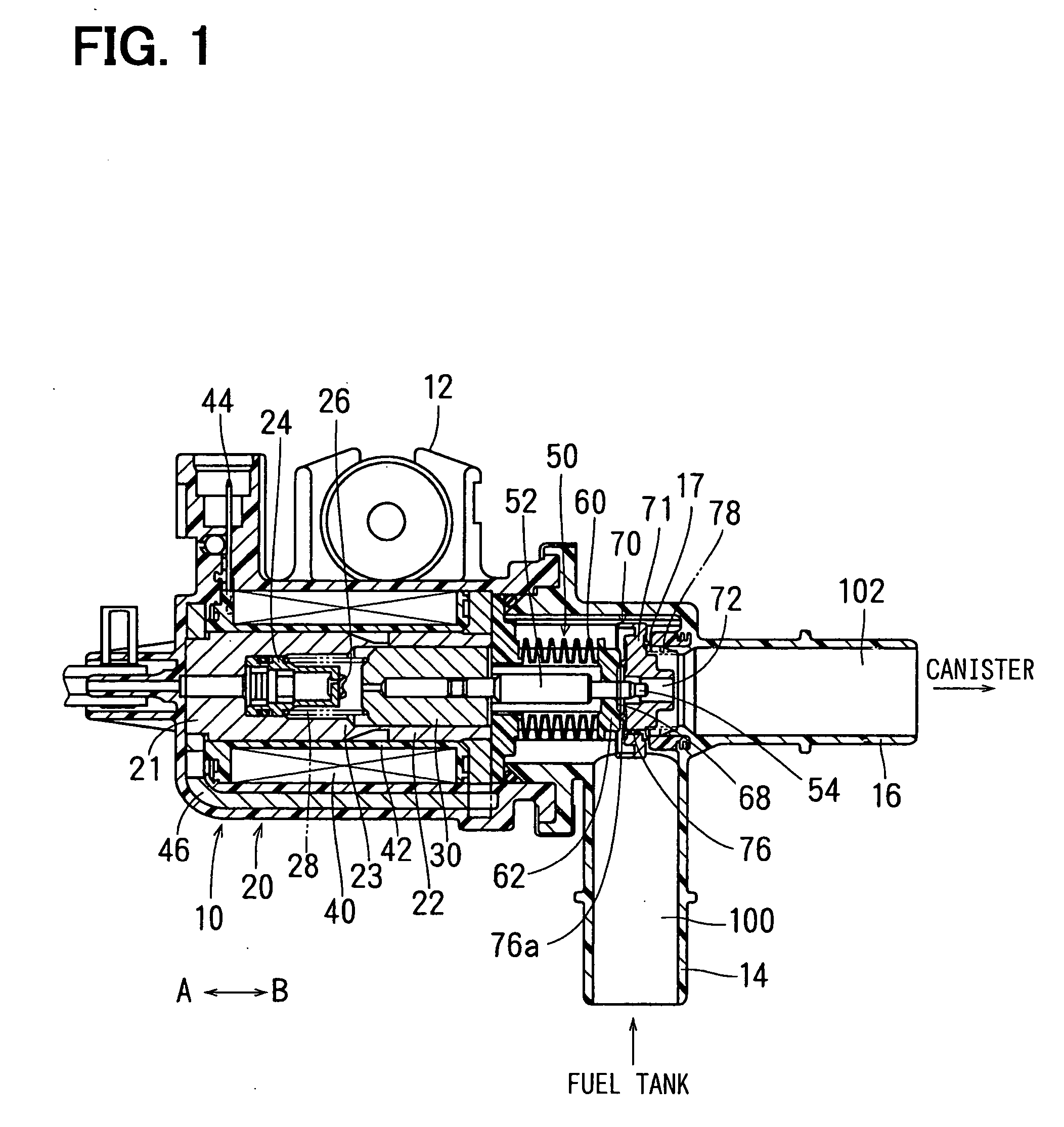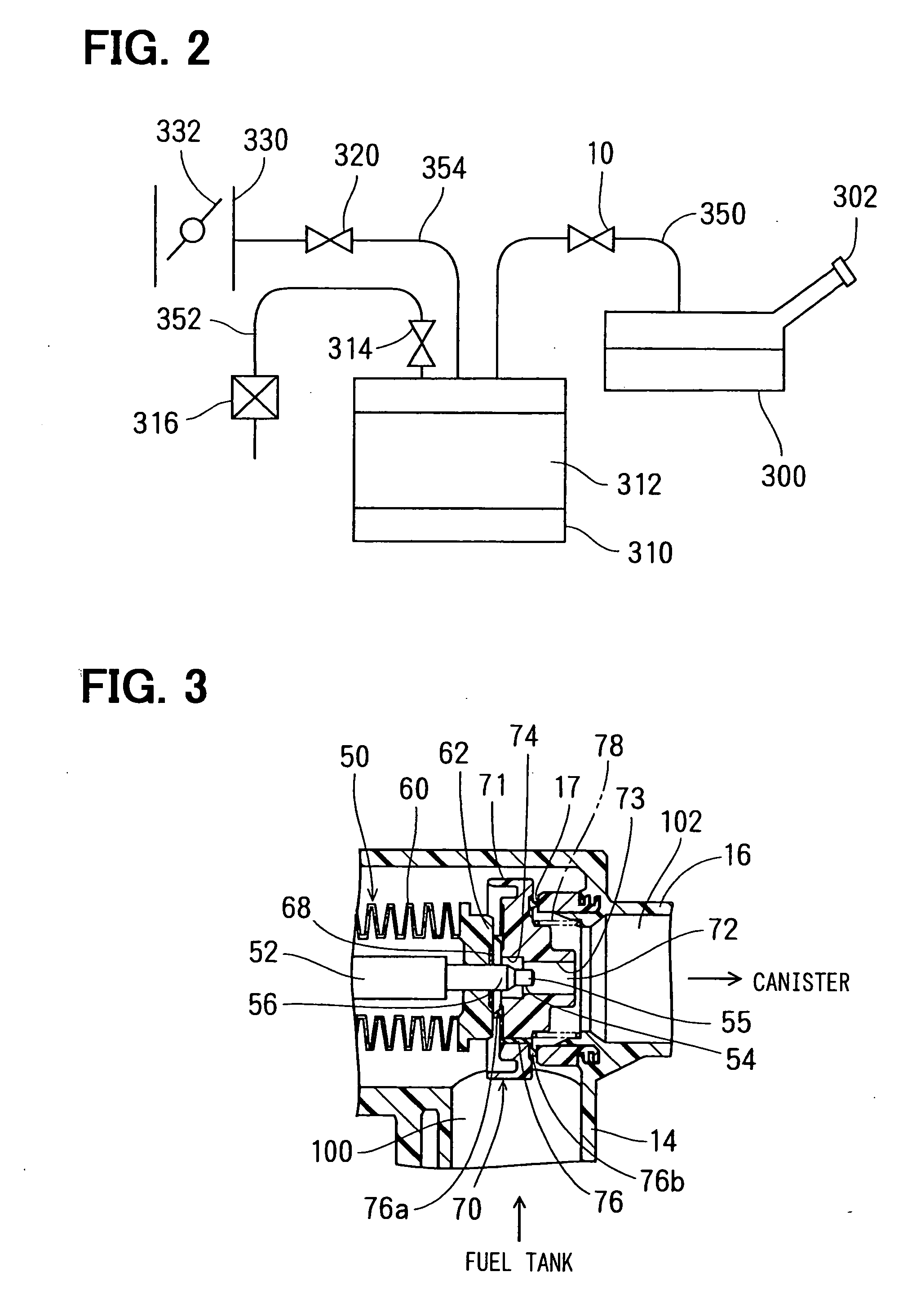Electromagnetic valve and vapor fuel treating system applying the same
- Summary
- Abstract
- Description
- Claims
- Application Information
AI Technical Summary
Benefits of technology
Problems solved by technology
Method used
Image
Examples
first modification
(First Modification)
[0045] A first modification is shown in FIG. 7. The structures other than the shaft 200 and the pressure receiving member 210 are substantially the same as the present embodiment shown in FIG. 1.
[0046] As shown in FIG. 7, a diameter of a fluid-amount controlling portion 202 of the shaft 200 is uniform and a diameter of a communicating passage 212 of the pressure receiving member 210 is uniform. The fluid-amount controlling portion 202 is inserted to the communicating passage 212 as shown in FIG. 7A, and then the fluid-amount controlling member 202 comes out of the communicating passage 212, so that the opening area increases stepwise as shown in FIG. 7C. Then, the difference pressure between the fuel tank 300 and the canister 310 decreases, so that the pressure receiving member 210 is lifted from the second valve seat 70, and the fluid amount of the vapor fuel increases.
second and third modification
(Second and Third Modification)
[0047] The second and third modifications respectively are shown in the FIG. 8 and FIG. 9. The same structures as the first modification are described in the same reference numbers.
[0048] In the second modification shown in FIG. 8A and FIG. 8B, a fluid-amount controlling portion 222 of the shaft 220 tapers stepwise in the three stages in an inserting direction of the communicating passage 212. Then in the third modification shown in FIGS. 9A and 9B, a communicating passage 232 of a pressure receiving member 230 tapers stepwise in the three stages in an inserted direction of the fluid-amount controlling portion 202.
[0049] According to the second and third modification, while the pressure receiving member 210 or 230 seats on the second valve seat 17, the shaft 220 or 200 is respectively lifted from the pressure receiving member 210 or 230. Thus, as shown in FIG. 9C, before the fluid-amount controlling portion 242 or 202 retracts from the communicating ...
fifth modification
(Forth and Fifth Modification)
[0050] The Forth and Fifth modifications are respectively shown in FIG. 10 and FIG. 11. The same structures as the first modification are described in the same reference numbers.
[0051] In the forth modification shown in FIGS. 10A and 10B, a fluid-amount controlling portion 242 of a shaft 240 tapers in an inserting direction of the communicating passage 212. Then, in the fifth modification shown in FIGS. 11A and 11B, a communicating passage 252 of a pressure receiving member 250 tapers in an inserted direction of the fluid-amount controlling portion 202.
[0052] According to the forth and fifth modifications, while the pressure receiving member 210 or 250 seats on the second valve seat 17, the shaft 240 or 200 is respectively lifted from the pressure receiving member 210 or 250. Thus, as shown in FIG. 11C, while the fluid-amount controlling portion 242 or 202 retracts from the communicating passage 212 or 252, the opening area increases smoothly.
Other E...
PUM
 Login to View More
Login to View More Abstract
Description
Claims
Application Information
 Login to View More
Login to View More - R&D
- Intellectual Property
- Life Sciences
- Materials
- Tech Scout
- Unparalleled Data Quality
- Higher Quality Content
- 60% Fewer Hallucinations
Browse by: Latest US Patents, China's latest patents, Technical Efficacy Thesaurus, Application Domain, Technology Topic, Popular Technical Reports.
© 2025 PatSnap. All rights reserved.Legal|Privacy policy|Modern Slavery Act Transparency Statement|Sitemap|About US| Contact US: help@patsnap.com



